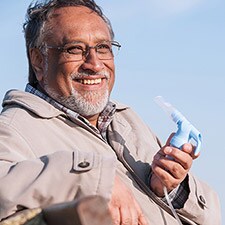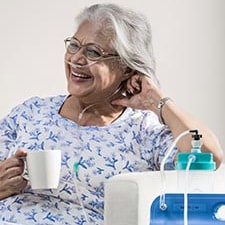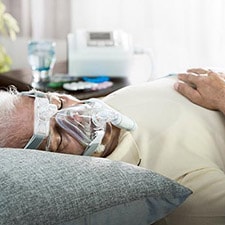Initial symptoms of COPD and how it is diagnosed
You may not find out immediately if you have COPD but there are some signs that you could watch out for which may serve as a warning sign. More often than not, COPD begins with incessant coughing that could get worse especially during morning hours. Coughing is usually the first sign of the onset of COPD. From excessive coughing, the symptom may aggravate to the next stage which is excessive mucus production or phlegm. It basically means that your lungs think irritants are entering your body, and it is trying to flush them out. In the next stage, you might start experiencing shortness of breath. You will notice that it takes more effort now to do the same level of activities than earlier. You need to put in more effort to breathe in and out. Shortness of breath is followed by wheezing in which you will hear a whistling or squeaky sound coming from your chest. You will also feel tightness in your chest. You will also start experiencing that the reduced inhalation and exhalation of air and the labor of breathing tires you out easily. Fatigue is a common symptom associated with COPD. Your energy level will go down and stamina will go down than before.
In COPD patients, the symptoms may not appear until substantial damages to the lungs are done. Moreover, the symptoms would directly correspond to the amount of lung damage. Also, it is not necessary that everyone with COPD will have symptoms evidently. If you are a regular smoker, or you get exposed to air pollution, chemicals, and other harmful fumes, then you are at risk of developing COPD with time.
Diagnosis
Followed by general consultation, you will put through some tests to assess the presence of COPD. Lung function test (spirometry) is commonly done. It is done to measure how much and how fast you can breathe in and out air. In other words, it is a way to know how effective your lungs are at supplying oxygen. A test of the arterial blood gas is also done to determine the level of oxygen in your blood. This requires collecting blood samples from an artery, and the results can tell you accurately the level of oxygen in your blood and whether you need oxygen therapy or not. Other tests such as exercise tolerance testing and desaturation testing are done to evaluate the amount of oxygen your lungs provide during and after exercise and while resting. A number of other tests can also be performed depending on the severity of COPD and result of other tests.
The first step towards diagnosing COPD is a chat with your physician who will look for signs and symptoms. You will be asked about your and your family’s medical history, your smoking preferences, environment of your work, exposure to pollutants, and so on.
Related articles

8 Signs of Good Sleep
Most of us are aware of the golden triangle of good health – diet, exercise and sleep. While diet and exercise are something you do while wide awake and in full consciousness, sleeping is something you do when you, well, sleep! You can track your calories and count your push-ups, but good sleep is much harder to measure!
Impact of smoking and air pollution on COPD
There is no denying the fact that the world we live in today is marred with air pollution. Whether it is outdoor or indoor, we are battling air pollution at all levels. According to WHO, tobacco consumption in the form of smoking is the biggest contributor of COPD in humans, whether it active or passive smoking.
Benefits of Oxygen Therapy
If you are suffering from Chronic Obstructive Pulmonary Disease (COPD) and it has reached an advanced (severe) stage, then it is likely that your doctor would prescribe you oxygen therapy. It is one of the most common treatments for COPD when the oxygen level in your blood drops to dangerously low.
About US
Our Services
Find Us
Contact US
Call us
Whatsapp us
Email us





